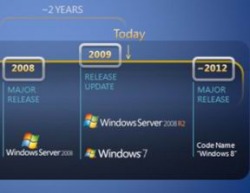 The folks at Microsoft Kitchen dug up some cool quotes from Microsoft employees about the upcoming Windows OS, currently codenamed Windows 8. Though it does bring up painful memories of what was promised about Vista (the marketing campaign, you may remember, was called “the wow starts now”), Microsoft did partially redeem itself with Windows 7, so we can put some (if not all) trust in what’s said about the next version.First, John Mangelaars, regional VP of consumer and online at Microsoft EMEA, simply said that Windows () 8 will be “mind-blowing.” Doesn’t really reveal much, but OK, we can set our expectations to “unreasonably high” if that’s how Microsoft wants to play this. Another quote, this time from an unknown employee, tells us a little bit more: “So what are our plans for this next version…The minimum that folks can take for granted is that the next version will be something completly different from what folks usually expect of Windows – I am simply impressed with the process that Steven has setup to listen to our customers needs and wants and get a team together than can make it happen. To actually bring together dozens and dozens of teams across Microsoft to come up with a vision for Windows.next is a process that is surreal! The themes that have been floated truly reflect what people have been looking for years and it will change the way people think about PCs and the way they use them. It is the future of PCs…” So besides “mind-blowing”, we can now add “surreal,” “the future of PCs” and “completely different”. I’m not exactly sure I want to enter an altered state of mind upon launching my brand new Windows 8 PC for the first time, but I agree it’s time for something completely different. Because, you know, Windows 7 wasn’t really all that different from Vista…
Sinofsky's Windows plan: More data, less testosterone LOS ANGELES--While some have criticized Steven Sinofsky for being tight-lipped, the Windows boss insists that he is being prudent, not secretive. "Everybody wants to know what's coming and what's next." But, he said, talking too soon, too early is actually a bad thing that just leads to frustration. "You reacting to some nightly developer build isn't really productive to anybody," Sinofsky said in an interview at this week's Professional Developers Conference. Sinofsky says that people don't want to show up to a restaurant and watch a potato being peeled and taste it half-cooked. For the same reason, he prefers to not talk about things until they are well, fully baked. "It's hard to imagine what else you want to see while it's in progress," Sinofsky said. "I don't want to see the daily cuts of a movie. I want to see what the director thought at the end." As a result, Microsoft didn't show Windows 7 until last year's Professional Developers Conference, just a year before the product was released. That's in sharp contrast to the prior version of Windows, which was first shown as Longhorn back in 2003. It ultimately suffered through numerous delays and significant changes before being released as Vista. 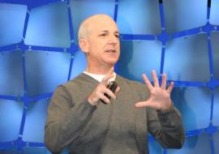 From early indications, Sinofsky would appear to be on to something. While Vista was largely panned by critics and shunned by businesses, Windows 7 has thus far had strong early sales and gotten high marks from reviewers. It's some of the same philosophy Sinofsky took in his earlier days, when he led development of Microsoft's Office franchise. "Normal people have stuff to do," he said. That's also why he doesn't really look for public feedback until the software is largely done. "We don't want feedback on a screenshot," he said. Sinofsky shifted from Office to Windows in March 2006 and earlier this year added responsibility for the business side of Windows as well, becoming the unit's president.
He said his philosophy toward Windows really boils down to a single word--responsibility. "There's not another project in software to work on that a billion people use and we take that really, really seriously in the hallways of our dev team," he said. Sinofsky also isn't one to be swayed by emotional arguments for or against a feature. If you want his attention--show him the numbers. He said he wants feedback, but he wants that feedback to "be based on data and not assertions or opinions or anecdotes." During his PDC talk on Wednesday, he referred to the other approach as "testosterone-based engineering." "It turns out we did a lot of things by that method," Sinofsky said. Often times, decisions on which features to include in the next version of a product were made that way. People, Sinofsky said, would basically just ask their friends. "Let me get this straight," Sinofsky said. "You are going to ask your 10 friends who all go to Fry's and build their own gaming machines and that's going to be the way we decide which features go in the product?" That, he said, "seems a little homogeneous. It seems a little limited in its reliability." But these days, Microsoft has a better option, gathering lots and lots of data from real-world use. Quite often, he said, the data will show things that might not be intuitive to Redmond's engineers. As an example, he showed a graph at the conference that showed the huge variety of graphics resolutions that Windows users were operating at, including a significant number with VGA-resolution displays. Folks in Redmond initially assumed they didn't really need to worry about such low-resolution screens. True to form, Sinofsky was emphatically silent when my questions drifted toward the future. I asked whether we might see a beta of Internet Explorer 9 at Mix and he literally just sat there silent until I asked the next question. Later on in the interview, the mere mention of Windows 8 got the same stone-faced glare. "I won't ask you what's in Windows 8, but can you talk at all (about it)? You mentioned that you are a few weeks into designing IE 9," I said. "Are you a similar amount into Windows 8?" Silence. More silence. "I didn't say any of the words--Windows 8--those were all your words," he said. "Next." Sinofsky did have some interesting things to say when I asked for his take on competitors like Google and Apple. "You have to take it very seriously," he said of the competitors. "That's always, always true in the software world. In the software world it doesn't take a lot to have a dramatic shift in how people perceive you or how they act. It's just very important no matter what your perceived or real or measured share is at one moment, it doesn't take a lot to change it down the road."
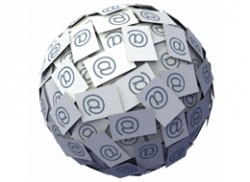 Brian Solis is a principal at new media agency FutureWorks, and author of the upcoming book, Engage. You can connect with him on Twitter or Facebook.One of the greatest challenges I encounter today is not the willingness of a brand to engage, but its ability to create. When blueprinting a social media strategy, enthusiasm and support typically derails when examining the resources and commitment required to produce regular content. Indeed, we are programing the social web around our brand hub, which requires a consistent flow of engaging and relevant social objects. Social objects are the catalysts for conversations — online and in real life — and they affect behavior within their respective societies. They are our tweets, our Flickr photos, YouTube videos, Facebook updates and events, Delicious links, FourSquare check-ins, and blog posts. But once we introduce a social object, we must be ready to back it up with additional relevant content, and create a publishing calendar programmed specifically for each network on which we maintain a presence.
Brands Become Their Media There’s a saying in theater: A big part of acting is reacting. This is especially true when we consider how many individuals, brands, and organizations engage on the web today. Instead of seeking inspiration and direction from those around us however, we simply react to activity, which may or may not benefit us in the long run.The democratization of publishing and the equalization of influence allows us to create and connect with a wider reach. Everything starts with a mission, and is fortified by the content we create.
Among the most valuable resources we procure through dedicated publishing is good will, social capital, and influence. It comes at a price however: The cost of production, distribution, and support. In the end, you get out what you put in. The investment represents time, money, creativity, and passion.
Thus, we not only become our media — through production and engagement, we can become influential.
Productive Social Media Must Be EarnedWhile establishing a presence is elementary, captivating audiences is artful. In the near future, brands and organizations will create new or augment existing roles for editors and publishers to create timely, relevant, and captivating content on all social media channels. This work is in addition to the other reactive and proactive social media campaigns that are already in progress. A strategic editorial calendar should blend video, audio, imagery, text, updates, and other social objects and networks to reach, inspire, and galvanize communities. Paragraph. Earned, Paid, and Owned MediaIn media, there are several channels that populate and shape perception — earned, paid, and owned media. Each requires a dedicated management system that actively creates, monitors and stimulates strategic movement. Recently, Sean Corcoran, an analyst at Forrester Research, published a detailed post that describes the differences between earned, paid and owned. He clarifies the roles for brands who undertake the responsibility of embracing new media. Dave Fleet, a thought leader in new media and public relations, also visualized Corcoran’s thoughts through a series of graphics that represent the social media ecosystem. As Corcoran points out in his recent report: “Increasingly, interactive marketers are being asked to manage a wide range of paid and unpaid marketing communication —- despite the fact that many marketing departments are still organized around traditional paid marketing channels. All types of online media (whether ‘earned,’ ‘owned,’ or ‘paid’) can play specific roles in meeting marketers’ objectives —- especially when seamlessly working together. To find the right balance between these types of media, marketers should take stock of their resources, listen for the impact of earned media, look for opportunities to shift short-term paid media to the role of catalyst, and begin to build out a solar system of long-term owned media touchpoints.” In other words, paid, earned and owned media require thoughtful programming and targeted distribution and must be linked to a systematic review of behavior and activity that surrounds each object. And, the analysis of activity and ultimately the end result should play a monumental role in the creation of future publishing and social activation. Corcoran uses the word “touchpoint,” which by standard definition, refers to any point of contact between a buyer and a seller. Touchpoint is part of the greater opportunity here. But more importantly, these touchpoints require direction and the establishment of a path that offers a complete experience — a beginning, a middle, an end, and a reward. These experiences are definable by paid, earned, and owned media. In media, there are several channels that populate and shape perception — earned, paid, and owned media. Each requires a dedicated management system that actively creates, monitors and stimulates strategic movement. Recently, Sean Corcoran, an analyst at Forrester Research, published a detailed post that describes the differences between earned, paid and owned. He clarifies the roles for brands who undertake the responsibility of embracing new media. Dave Fleet, a thought leader in new media and public relations, also visualized Corcoran’s thoughts through a series of graphics that represent the social media ecosystem. As Corcoran points out in his recent report: “Increasingly, interactive marketers are being asked to manage a wide range of paid and unpaid marketing communication —- despite the fact that many marketing departments are still organized around traditional paid marketing channels. All types of online media (whether ‘earned,’ ‘owned,’ or ‘paid’) can play specific roles in meeting marketers’ objectives —- especially when seamlessly working together. To find the right balance between these types of media, marketers should take stock of their resources, listen for the impact of earned media, look for opportunities to shift short-term paid media to the role of catalyst, and begin to build out a solar system of long-term owned media touchpoints.” In other words, paid, earned and owned media require thoughtful programming and targeted distribution and must be linked to a systematic review of behavior and activity that surrounds each object. And, the analysis of activity and ultimately the end result should play a monumental role in the creation of future publishing and social activation. Corcoran uses the word “touchpoint,” which by standard definition, refers to any point of contact between a buyer and a seller. Touchpoint is part of the greater opportunity here. But more importantly, these touchpoints require direction and the establishment of a path that offers a complete experience — a beginning, a middle, an end, and a reward. These experiences are definable by paid, earned, and owned media. Paid media represents the visibility we purchase, such as display ads, paid search, and sponsorships. When paired with owned and earned media programs, paid media can complement, reinforce, and polish a brand’s voice, directives, mission, and stature. While many argue over the future and fate of advertising, what’s clear is that online paid presences can benefit initiatives where action and experiences are defined and promoted through the click path. Current trends reflect a shift away from branding programs and place emphasis on sparking desired activity, empowering viewers and their social graph to share in the experience all in ways that measure the cost per action. Earned media is the result of our owned, paid, and participatory media programs and is reflected in the blog posts, tweets, status updates, comments, and ultimately actions of our consumers, peers, and influencers. Earned media is linked to owned media campaigns as well as proactive initiatives that attempt to incite viral and word-of-mouth activity. Garnered visibility is also tied to communications and public relations programs as they continually seek to gain the attention of reporters, bloggers, analysts, and influencers who can drive awareness and behavior. This isn’t a one way street however. Success is absolutely conditional on the techniques and methodologies that inspire dedicated programs focused on outreach, relations, and hopefully the engendering of productive and mutually beneficial relationships. Crowd-powered visibility also merits an official and devoted listening and response initiative to ensure that each respective community aligns with the mission. Participatory media is an extension of earned and owned media. It takes the shape of a hosted hub where brand representatives and our communities can interact and collaborate. Good examples of this are Dell’s IdeaStorm and Starbucks’ “ My Idea” network, which resemble branded wikis designed to elicit responses and establish community-focused governances. Participatory media equalizes the balance of power, providing a dedicated platform the gives voice to the consumer and a channel for their ideas. Sponsored media is a new category that fuses owned, paid, and earned media. Sponsored media is championed by companies like Izea, Ad.ly, and Twittad, among others, and is creating a new medium for packaging messages through trusted voices within highly visible and social channels. Sponsored media can take the form of paid tweets, blog posts, appearances, and featured objects on targeted profiles. And, whether you agree or disagree with the idea, the reality is that it works, and seems to benefit all parties involved, from the brand, to the paid affiliates, to their communities. In fact, Forrester’s Josh Bernoff and Sean Corcoran shared their thoughts on why sponsored media is worthy of consideration. Sponsored objects fuse earned, paid, and owned media, as technically: 1) The messages are owned; 2) The voices are paid, and; 3) With more thoughtful approaches, the responses within targeted communities can inspire a positive wave of earned media. Disclosure: My company works with Ted Murphy, Founder/CEO of izea.com. Influence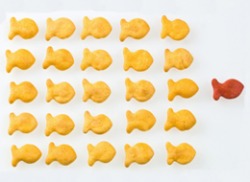 As media, brands earn prominence and hopefully influence as rewards for contributing meaningful content. On Twitter, brands can earn legions of loyal and responsive followers, who in turn become brand advocates and ambassadors, extending the messages, mission and purpose of the brand to their followers as well. On Facebook, brands can cultivate vibrant and dedicated communities where interaction inspires increased responses — each reverberating across new social graphs. On Ustream and YouTube, we can earn global audiences of viewers who tune in to watch our programming and interact with brand representatives in a live community that spills over other social networks. And of course, our blog is more important than we may realize. Through our posts, we can establish a strong alliance of subscribers who hope to learn new things and participate in the discussion of a brand’s future.As Tom Foremski points out, we have the ability to earn noteworthy, equal, and in some cases, greater influence than those authorities whom we’ve relied on over the years to help us reach greater audiences and communities. As influence is equalized, our ability to earn presence and relationships is derived from how we program, manage, and participate in all forms of media. And, it is through a balance of media and engagement that we also establish the foundation for affinity. People align with movements they can believe in, and it is the human, intellectual, and financial investment in genuine content that defines experiences, and hopefully one day earns the significance your brand deserves.
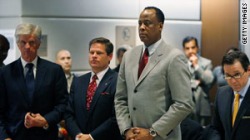 Los Angeles, California (CNN) -- With Dr. Conrad Murray officially charged in Michael Jackson's death, the Los Angeles coroner has released the autopsy report that said it was a homicide.
The 51-page report gives vivid detail supporting last August's conclusion that Jackson died from "acute propofol intoxication."
Murray told investigators he gave Jackson propofol, a powerful anesthetic, to help him sleep.
An anesthesiology consultant hired by the coroner to review the findings of the investigation said that "there are NO reports of its use for insomnia relief, to my knowledge," according to the report.
"The only reports of its use in homes are cases of fatal abuse (first reported in 1992), suicide, murder and accident," Dr. Selma Calmes wrote.
"The standard of care for administering propofol was not met," she wrote.Autopsy report lists details of Jackson's death (PDF)
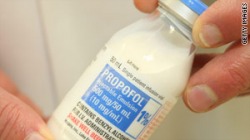 Murray, who was with Jackson when he died, is charged with involuntary manslaughter by acting "without malice" but also "without due caution and circumspection."Jackson, who hired Murray as his physician while he prepared for what was to have been a series of comeback concerts, called the doctor to his rented Holmby Hills mansion last June 25 at about 1 a.m., the report said.
"
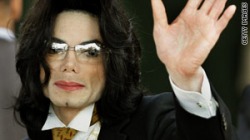 The decedent complained of being dehydrated and not being able to sleep," it said.
A police affidavit previously made public said that the doctor told investigators he gave Jackson three anti-anxiety drugs to help him sleep that morning.
Murray told them he had been treating Jackson for insomnia for six weeks at the time of the singer's death. He had given Jackson 50 milligrams of the sedative propofol diluted with the local anesthetic lidocaine every night via an intravenous drip.
The doctor told police he was worried that Jackson was becoming addicted to the drug and was trying to wean him off it.
During the two nights before Jackson's death, Murray said, he put together combinations of other drugs that succeeded in helping Jackson sleep.
Coroner investigators first examined Jackson's body at UCLA Medical Center less than three hours after he was pronounced dead. They used the picture on his California driver's license to confirm it was the singer.The decedent's head hair is sparse and is connected to a wig. The decedent's overall skin has patches of light and dark pigmented areas," an investigator wrote.
Jackson suffered permanent hair loss when his scalp caught fire while he was taping a Pepsi commercial in 1984. He was known to wear wigs in public after the mishap.
Jackson's dermatologist, Dr. Arnold Klein, told CNN last year that he had treated Jackson for vitiligo, a skin condition that causes irregular patches of white skin.
Jackson weighed 136 pounds and was 69 inches tall, according to measurements taken during the autopsy the morning after his death.
The front of Jackson's scalp, from his hairline, was tattooed with dark ink over "frontal balding." His eyebrows and the border of his eyelids were also tattooed.
"There is a pink tattoo in the region of the lips," the report said.
The autopsy report noted several broken ribs, apparently suffered during the efforts to revive him.
The autopsy also said that Jackson's left lung was affected by "widespread respiratory bronchiolitis and chronic lung inflammation" that could have had an "adverse health effect." But it was not "considered to be a direct or contributing cause of death," a pathologist hired as a consultant concluded.
Calmes, the consultant, concluded that propofol was administered without the recommended equipment being present, including a "continuous pulse oxymeter, EKG and blood pressure cuff."
Use of the anesthesia requires "full patient monitoring by a person trained in anesthesia," she wrote. Murray is a cardiologist.
"There was no evidence of an infusion pump for control of an IV infusion. No monitors were found at the scene; a blood pressure cuff and portable pulse oxymeter were recovered from a closet in the next room," Calmes wrote.
The consultant said supplemental oxygen "should always be delivered" when propofol is being administered.
An oxygen tank was found near where Jackson slept, but it was empty when the coroner investigator checked it two weeks after Jackson died, Calmes said.
"Multiple opened bottles of propofol were found with small amounts of remaining drug," Calmes said. "A used bottle should be discarded six hours after opening, to avoid possible bacterial growth."
"The levels of propofol found on toxicology exam are similar to those found during general anesthesia for major surgery," Calmes said.
During such surgery, any patient would be "intubated and ventilated by an anesthesiologist," she said.
The consultant's report said the level of lorazepam, a powerful anti-anxiety agent found in Jackson's body, "would have accentuated the respiratory and cardiovascular depression from propofol."
An involuntary manslaughter charge against a physician is a "very unusual thing to see," according to Bruce Cranner, a New Orleans defense lawyer in medical cases.
Cranner said prosecutors may have a "pretty good case" against Murray if they can show he did not take proper precautions when giving Jackson the propofol.
Washington (CNN) -- Police in China shut down what officials think was the largest training Web site for computer hackers, local media said.
The Black Hawk Safety Net offered lessons on cyber attacks and sold Trojan software, which allows outside access to a computer when remotely installed, media reports said.
Police arrested three people who ran the Web site and charged 100 to 200 yuan ($14 to $29) for lessons, the China Daily newspaper said.
Established in 2005, the site had recruited more than 12,000 paid and 170,000 free members and collected more than 7 million yuan ($1.02 million) in membership fees, the reports said.
Authorities were tipped off to its existence while investigating a cyber attack in 2007. Some suspects arrested in that case were members of Black Hawk.
The suspects in the Black Hawk case were arrested under a law revised last year in response to cyber crimes.
China says hackers caused 7.6 billion yuan ($1.02 billion) in losses in the country last year.
Last month, online search giant Google threatened to pull out of China, saying Chinese hackers had penetrated some of its services in a politically motivated attempt at intelligence gathering.
China's information information technology ministry called the accusations of government involvement "groundless."
The Chinese government has said that the Google case is a business dispute and should not affect relations between Beijing and Washington.
Last month, foreign correspondents in at least two Chinese bureaus of news organizations had their Google e-mail accounts attacked, with e-mails forwarded to a mysterious address, according to the Foreign Correspondents' Club of China.
(CNN) -- Google plunged into the world of social networking on Tuesday, melding pieces of Facebook and Twitter into a new feature, Google Buzz.
Buzz, which will work through the popular Gmail service, will allow users to post status updates, photos and links to members of their network -- as well as pull in their activity on other sites like Twitter, Flickr and Picasa.
Google spokesman Bradley Horowitz said the service, which was rolling out to some Gmail users Tuesday afternoon and should be available to all in the next couple of days, aims to weed out what he called the clutter of other networking sites.
With networking sites, "there's obviously value there," he said. "It's a phenomenon that's real, but it's increasingly becoming harder and harder to make sense and find the signal in the noise."
By letting users post photos, links and updates openly, the tool would mimic Twitter's micro-blogging format. But users also will be able to make their content available to "friends only," more closely following the Facebook model.
At an event at the company's Mountainview, California, headquarters, Google also seemed poised to take a poke at the AOL Instant Messenger service, saying Buzz will be offered to companies as a tool for interoffice communication.
"It will change the way businesses communicate around the world," Horowitz said.
Despite the inevitable comparisons, Google spokesmen said they didn't set out to tread on anyone else's turf.
"We try not to pay too much attention to competitors," Gmail product manager Todd Jackson said. "We try to listen to users."
Horowitz said Google Buzz will automatically make "friends" out of the people a user e-mails or chats with the most on Gmail.
Comments on posts will appear in real time. And comments by other users will be weighted, similar to how Google's search engine weighs results, to "collapse bad buzz and recommend the good buzz," Jackson said.
The hands-down leader in the search engine world, Google has been branching out on projects that include its Nexus One smartphone, the company's first foray into hardware marketing.
Late last month, Google announced that people could tweak their accounts to make results related to friends, co-workers and other members of their social networks appear above all other results.
The Social Search feature was introduced to a limited number of Google users last year and was made available to everyone in beta status on January 28.
The change came with a hint of more things to come.
"This is just a first step in our ongoing effort to ensure that Google Web search is always as social as the Web itself," the company said in an instructional video posted to its official blog.
Google Buzz probably won't be able to bring in status updates and other materials from Facebook for the same reason that Social Search doesn't.
Because most Facebook users set their information to be viewed only by friends, Google's search engine can't collect that information in the same way it can from Twitter and, obviously, Google-owned sites like YouTube.
Buzz also will have a mobile component, operating on most major wireless operating systems with features that include voice-recognition posting and a GPS-enabled ability to attach the user's location to posts.
The Web-based mobile application, which can be used by iPhones despite not going through Apple's online store, can also be set to pick up posts to Buzz being made near the user's location.
Changes to the tool could be coming quickly, too. Google officials say they're already studying possible expansions. They include allowing Buzz updates by phone, letting users post to their Twitter account through the tool and linking Buzz with the still-emerging Google Curve system.
"We're just getting started," Horowitz said. "We're not launching this today because we think we're done. We don't think that's how a product like this is built."
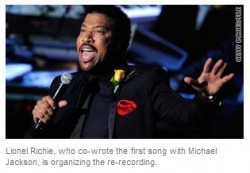 Los Angeles, California (CNN) -- Dozens of recording stars began converging on a Hollywood studio Monday to add their voices to a song they hope will raise millions of dollars for Haitian earthquake relief.
The lyrics and music are an updated version of "We Are the World," a song that raised at least $30 millions for African humanitarian programs 25 years ago.
Lionel Richie, who co-wrote the first song with Michael Jackson, is organizing the effort. The original producer, Quincy Jones, is using the same studio he used in 1985.
Paparazzi and security surrounded Henson Studios, just off Hollywood's Sunset Boulevard, anticipating the arrival of limousines delivering the stars Monday afternoon for what is expected to be a marathon recording session.
Smokey Robinson, who sang on the original, said the roster of 100 singers asked to take part does not include any of the 45 stars from the previous version.
While the list has not been made public, CNN has confirmed it includes Usher, Carrie Underwood, Fergie, Jason Mraz, Rob Thomas, Anthony Hamilton, Trey Songz, Sugarland, Julianne Hough, India.Arie and Musiq Soulchild.
Many of the stars were already in Los Angeles to attend Sunday's Grammy awards show.
One tool Jones used in 1985 to keep the massive recording session from getting out of control was a sign above the studio door that read: "Check your egos at the door." It is expected it will be there again, one organizer said.
Organizers have not said when the song might be ready for the world to hear.
|




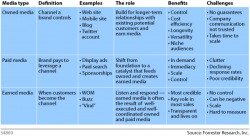
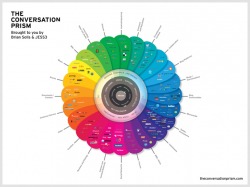




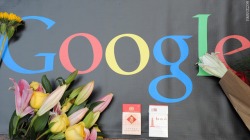
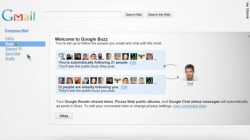


 RSS Feed
RSS Feed